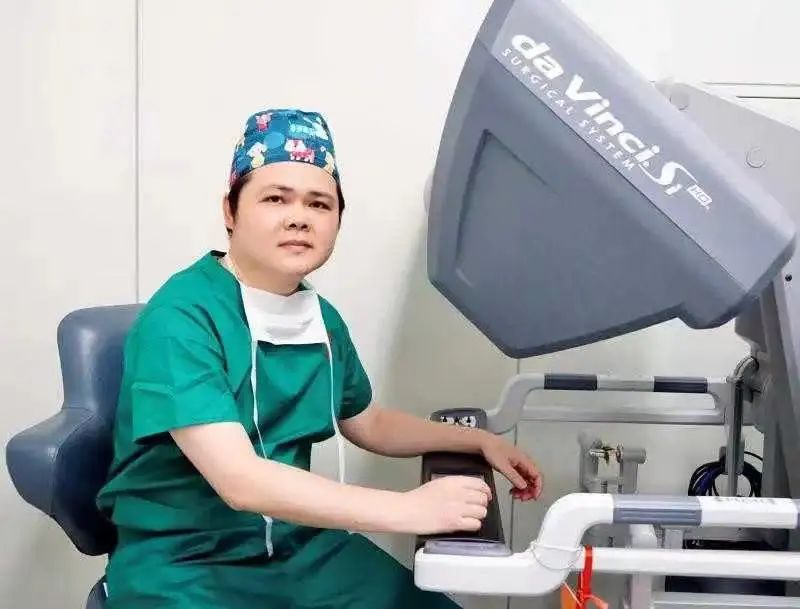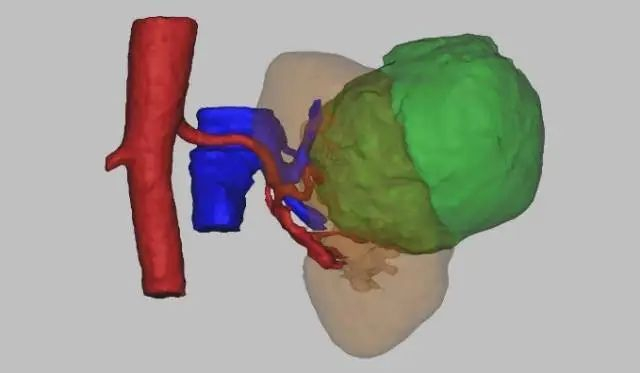【GD TODAY】Robot-assisted surgery in GD removes a 10 cm tumour to preserve kidney
? ? ? Recently, Professor Luo Junhang's team from the Urology Department of the First Affiliated Hospital of Sun Yat-sen University (FAH-SYSU) completed robot-assisted kidney preservation surgery for a renal cancer patient with a large complex tumour.?
? ? ? The patient was discharged with good surgical effect and without any complications on the 6th day after surgery. In recent years, the team has completed kidney preservation surgery for over 50 patients with large complex tumours with the assistance of robots.?
?

Prof. Luo Junhang and a surgical robot
?
? ? ? The 50-year-old Uncle Zhen (assumed name) developed a 7-cm tumour in his kidney. After an ultrasound scan in his local area, the doctor informed him that “it is likely to be a benign tumour”. Feeling relieved, Uncle Zhen thought of treating it slowly first.?
? ? ? However, the tumour grew to 10 cm large in less than two years, and a CT scan revealed that it was kidney cancer rather than benign renal angiomyolipoma. Uncle Zhen then came to the Urology Department of the FAH-SYSU to seek medical help.
? ? ? After reviewing the patients’ imaging tests, Prof. Luo found that although Uncle Zhen’s tumour was 10 cm large, it hadn’t spread into the surrounding tissues and distant organs, which belonged to T2 kidney cancer.?
? ? ? In the past, although renal-conserving surgery could also be considered for such a large tumour, the risk of massive intraoperative bleeding was relatively high. Additionally, compared to surgery for small kidney cancer, it necessitates a longer period of renal ischemia time, which increases the risk of irreversible kidney damage and defeats the purpose of kidney preservation. Therefore, many hospitals recommend patients consider total nephrectomy.
? ? ? Prof. Luo Junhang said, “Under mature technical conditions, such a large-size kidney tumour can also be treated with renal-conserving surgery.
? ? ? What role does the surgical robot play? Prof. Luo explained that, taking Uncle Zhen’s tumour as an example, it is located in the middle of the kidney and close to the renal hilus. The difficulty lies in the large resection range and deep wound surface. During separation, there is a risk of damaging the renal arteries and veins, inferior vena cava, renal pelvis, and ureter, leading to significant bleeding and urinary leakage.?
? ? ? To prevent postoperative bleeding and urinary leakage, careful suturing of the wound is necessary, as well as kidney reconstruction. With the assistance of surgical robots, surgery can be completed more accurately, stably, and minimally invasively.
? ? ? Before surgery, Prof. Luo’s team meticulously created a three-dimensional reconstruction model of the kidney for patients. It displayed important structures of the tumour and renal hilus area to avoid accidental damage during surgery. Based on the three-dimensional kidney model, the team devised an individualized kidney preservation surgery plan for the patient.
?

A three-dimensional reconstruction model of the kidney and the tumour,
with the green part indicating the tumour
?
? ? ? During the surgery, Prof. Luo’s team comprehensively applied technologies such as preoperative 3D reconstruction, intraoperative robot-assisted laparoscopy, and intraoperative real-time ultrasound localization to accurately locate and remove the tumours. During the procedure, the new technique of gradual renal segmental artery unclamping which invented by Prof. Luo Junhang was applied to shorten renal ischemia time. After deep wounds were sutured, the normal renal supply branch artery was opened, and then the superficial wounds were sutured, shortening the renal ischemia time.
? ? ? Uncle Zhen’s renal ischemia time was controlled within 20 minutes, greatly protecting the renal function. The intraoperative bleeding was about 150 millilitres, smaller than a regular blood donation (200 millilitres).
? ? ? How to prevent and treat kidney tumours? Prof. Luo gives the following three suggestions:
? ? ? First, healthy people should conduct a kidney ultrasound examination once a year to detect kidney tumours early and have early diagnosis and treatment.
? ? ? Second, when a renal tumour is detected by ultrasound, it cannot be judged as benign or malignant only depending on the result of theultrasound, further CT examination is needed.
? ? ? Third, tumour resection and kidney-sparing surgery for large, complicated localized renal cancer should be performed cautiously. And two conditions must be met: mature technical experience and sufficient residual nephrons.
?
Author | Hannah, Yao Jingsen (intern)
報(bào)道鏈接:
https://www.newsgd.com/node_99363c4f3b/a0f76daef0.shtml
報(bào)道日期:2023-04-13





